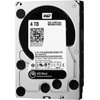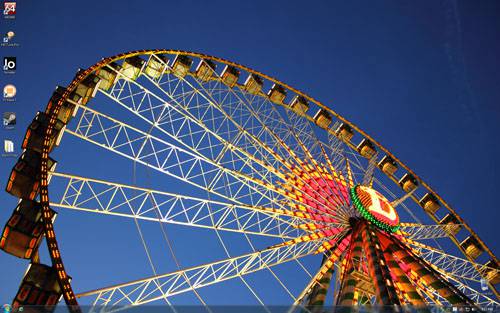- Qualcomm Launches Snapdragon 4 Gen 2 Mobile Platform
- AMD Launches Ryzen PRO 7000 Series Mobile & Desktop Platform
- Intel Launches Sleek Single-Slot Arc Pro A60 Workstation Graphics Card
- NVIDIA Announces Latest Ada Lovelace Additions: GeForce RTX 4060 Ti & RTX 4060
- Maxon Redshift With AMD Radeon GPU Rendering Support Now Available
WD Black 4TB Hard Drive Review

WD’s Black 4TB is the sort of product that doesn’t need much of an introduction – it speaks for itself. We’re dealing with a standard-sized desktop hard drive that sports a market-leading 4TB of storage. That’s 4,000GB, for those not paying enough attention. It’s impressive on paper, so let’s see how it fares in our benchmarks.
Page 2 – Test System & Methodology
At Techgage, we strive to make sure our results are as accurate and real-world applicable as possible. We list most of the steps and processes involved in setting up and conducting our benchmarking process below, but in the interests of brevity we can’t mention every last detail. If there is any pertinent information that we’ve inadvertently omitted or you have any thoughts, suggestions, or critiques, then please feel free to email us or post directly in our forums. This site exists for readers like you and we value your input.
The table below lists the hardware used in our current storage-testing machine, which remains unchanged throughout all of our testing with the exception of the storage device. Each drive used for the sake of comparison is also listed here. If the machine seems overkill for HDD testing – it is. It also doubles as our GPU testing rig.
Chassis
| Techgage Hard Drive Drive Test System | |
| Processor | Intel Core i7-3960X Extreme Edition – Six-Core @ 4.20GHz – 1.375v |
| Motherboard | GIGABYTE G1. Assassin 2 – F4E BIOS (12/12/2011) |
| Memory | Corsair Dominator GT 16GB DDR3-2133 9-11-12-27, 1.60v |
| Graphics | GeForce GTX 680 2GB (Reference) – GeForce 301.42 |
| Audio | Onboard Creative X-Fi |
| Storage | OS Drive: Kingston HyperX 240GB SATA 6Gbit/s SSD Testing Drives: WD VelociRaptor 1TB (WD1000DHTZ, 64MB Cache, 10K RPM) WD Black 4TB (WD4001FAEX, 64MB Cache, 7.2K RPM) WD Black 2TB (WD2002FAEX, 64MB Cache, 7.2K RPM) WD Green 2TB (WD20EARS, 64MB Cache, ~5.3K RPM) WD Blue 1TB (WD10EALX, 32MB Cache, 7.2K RPM) |
| Power Supply | Corsair AX1200 1200W |
| Cooling | Corsair H70 Self-Contained Liquid Cooler |
| Et cetera | Windows 7 Ultimate SP1 64-bit |

Our Windows 7 Desktop for HDD Testing (Photo Credit)
When preparing our HDD testbed for benchmarking we follow these guidelines:
General Guidelines
- Our CPU is frequency-locked to avoid potential performance variances.
- No power-saving options are enabled in the motherboard’s EFI.
- AHCI is enabled in the motherboard’s EFI for best performance.
- Only the Intel 6Gbit/s port controller is used for test drives.
- Only cold boots are utilized; for the purposes of our testing a boot is defined as the moment the power button is depressed to the moment the last systray icon and program has fully loaded after reaching the Windows 7 desktop. Auto-login is enabled.
Windows 7 Optimizations
- User Account Control (UAC) is disabled.
- The OS is kept clean; no scrap files are left in between runs.
- The Windows Search daemon is disabled.
- Windows Update and OS power-saving settings are disabled.
For our test suite, we’ve chosen a blend of both real-world and synthetic tests in order to get the best picture possible for overall drive performance. Although we value real-world performance higher than synthetic, synthetic tests are ideal because they give us the best case scenario of what a drive can do – and most often, the same tests can be run by you to be compared. Our synthetic benchmarks include Futuremark’s PCMark 7, which has become synonymous with storage benchmarking, and also HD Tune Pro 5.0, Iometer 1.1.0 and AIDA64 2.30.
For real-world testing, we perform both solid file and folder transfers, game level loading performance and also Windows 7 boot times.
Note: While the Windows boot time test implies that the OS is installed on the hard drive, all other tests are performed when the drive is the target. For our HD Tune, AIDA64 and Iometer tests, the drive is left unpartitioned.
Support our efforts! With ad revenue at an all-time low for written websites, we're relying more than ever on reader support to help us continue putting so much effort into this type of content. You can support us by becoming a Patron, or by using our Amazon shopping affiliate links listed through our articles. Thanks for your support!





